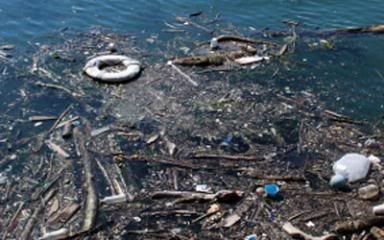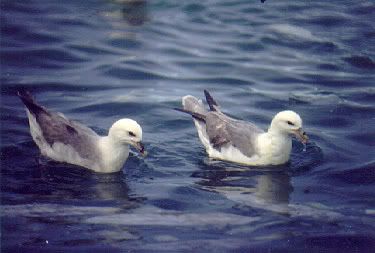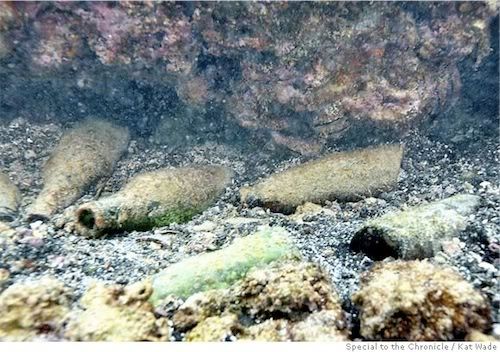(2:30PM EST – promoted by Nightprowlkitty)
A “plastic soup” of waste floating in the Pacific Ocean is growing at an alarming rate and now covers an area twice the size of the continental United States. But you knew that. It has been reported for some time. The question is: is there anyone out there doing anything about it? The answer is no. Eighty percent of the plastic comes not from ships but from land, where tossed consumer goods eventually travel from beaches and rivers into the ocean, according to Algalita.
It is already been reported by Chilean scientists that a similar mass exists in the Southern Ocean near Antarctica.
Cross-posted on the Big Orange and La Vida Locavore.
The first time I heard the word “pollution” was when I was around five or six. My uncle was reading aloud an account of Dr Bombard’s voyage. A biologist and medical doctor, Bombard specialized in the study of survival at sea. In 1952 he completed a 65-day solo voyage across the Atlantic on a single-sailed inflatable raft, which he named “The Heretic,” to prove that it was possible. Upon his return he announced that he had encountered polluted waters (additionally, his outspoken opposition to the French practice of force-feeding geese for pâté de foie gras earned my eternal admiration for this man).
Charles Moore, an American oceanographer who discovered the “Great Pacific Garbage Patch” or “trash vortex”, believes that about 100 million tons of flotsam are circulating in the region. Marcus Eriksen, a research director of the US-based Algalita Marine Research Foundation, which Mr Moore founded, said:
“The original idea that people had was that it was an island of plastic garbage that you could almost walk on. It is not quite like that. It is almost like a plastic soup. It is endless for an area that is maybe twice the size as continental United States.”
Across the pond Dutch scientists have found that more than nine out of 10 European fulmars (seabirds that eat at sea) die with plastic rubbish in their stomachs. A study of 560 fulmars from eight countries revealed they had ingested an average of 44 plastic items. The stomach of one fulmar that died in Belgium contained 1,603 separate scraps of plastic.
Birds are not the only ones to suffer. Turtles, whales, seals and sea lions have all eaten plastic. But the most sinister problem may be a hidden one at the other end of the food chain hence this diary here today: it is fairly well established that certain toxins in the ocean, such as polychlorinated biphenyls (PCBs), the pesticide DDT and other potentially dangerous substances, can become concentrated on the surface of plastic debris. Toxins from pesticides, fertilizers, and other chemicals used on farms contaminate nearby rivers that flow into the ocean, which can cause extensive loss of marine life in bays and estuaries leading to the creation of dead zones. The dumping of industrial, nuclear and other waste into oceans was legal until the early 1970’s when it became regulated; however, dumping still occurs illegally everywhere. Then you have the other elephant standing in the room: the Army secretly dumped 64 million pounds of nerve and mustard agents into the ocean, along with 400,000 chemical-filled bombs, land mines and rockets. That’s another story.




9 comments
Skip to comment form
Author
And Earth is the host. I try my best to use as little plastic as possible and have for years, but it’s impossible to use none. It’s everywhere. And it’s rapidly filling to oceans. When the oceans die the rest will follow.
What’s to be done? Is it possible to remove that stuff from the seas? Better care with waste management is a place to start, but just a start. Remedial work is imperative.
Author
Jacques Cousteau’s wonderful documentaries about the underwater world. He never failed to give the same basic message: Cousteau was convinced that our survival is dependent on the oceans of the world and he strove to raise people’s awareness of our fragile ecosystem.
this business of plastics: wOw.
the energy to produce it… overwhelming enough. but that is poisons our waterways and earth . . .
i heard this guy say that 20 years ago in India, pop. about half a billion?, there were only 20 million land line phones.
today. TODAY, 8 million cell phones are sold each MONTH. now where does all that plastic go? not to mention the other crap to dispose of like battery metals et al…
jeSUS christmas. we are a bunch of lunatics.
we don’t need most of it. consumers have a lot to do here. i only have glass in my kitchen (with on box of saran wrap).
and i e-mail companies about their excess packaging. and toys. where to begin?
great essay.